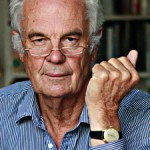The dangers of chemical weapons, Syria’s too
By Jonathan Power
The Syrian government say that, unlike Saddam Hussein, it won’t use its sizeable stocks of chemical weapons on its own population, only on would-be attackers. That’s a comfort of sorts since nobody is going to attack it. Chemical weapons are regarded as weapons of mass destruction along with nuclear and biological weapons. Chemical agents like sarin that destroys the nervous system, VX and mustard gas can kill thousands of people in one blow.
If the UN were mandated to send in troops or the US did so unilaterally their forces could be devastated by a chemical attack. The main worry – as such an invasion is highly improbable unless a dying regime or a new regime asks for help – is that the chemical stockpiles could fall into the wrong hands – the hot-headed thorn in Israel’s flesh, Hezbollah in southern Libya or Al Qaeda which the regime says are part of the opposition.
The Syrian weapons have been developed despite the UN’s Chemical Weapons Convention which all the countries of the world have signed up to bar six or eight. Syria has argued that it has to deter the nuclear and (probably) chemically armed Israel.
According to the report of the Independent Commission on Disarmament chaired by the late Swedish prime minister, Olof Palme, “The suffering can be extraordinary and the deaths or associated illnesses terrifying. A single tactical aircraft, shell or missile armed with nerve gas could threaten 50% casualties over an area of about two square kilometres.”
Chemical weapons haven’t been used by Western countries, except Italy, since World War 1. There were hundreds of thousands of casualties. Italy used them against Ethiopia in 1935. A few years ago the US supplied 2,000 gas masks to Chad because of its fear of a Libyan attack by the forces of Moammar Gadhafi.
A few years ago Israel did seriously consider a pre-emptive attack on a Syrian chemical weapons’ factory. President Bill Clinton ordered the bombing of a factory in Sudan where he suspected, wrongly, that Al Qaeda was manufacturing chemical weapons.
Unsurprisingly the American and European military brass decided a long time ago that they were against their use. The Geneva protocol of 1925, signed by 100 countries, banned first-use of chemical weapons- then mustard gas and chlorine. But forbidding first-use did not prohibit stockpiling or responsive use. And after all chemical weapons were so much cheaper to manufacture than conventional weapons.
It took over twenty years of plodding negotiations in the 1970s, 80s and 90s to formulate a treaty that would outlaw the weapons altogether. The main East-West stumbling block was disagreement over “adequate verification”, in particular the need for on site inspection. But in 1986 the Soviet Union dramatically change its approach to verification and accepted it. Then the US followed a couple of years’ later when it revealed the exact location of America’s plants manufacturing chemical weapons.
Another obstacle that was only slowly overcome was the chemical industry which professed to be worried about “house secrets”. But too many companies exported large quantities of “fertilizer ingredients” to Iran, Israel, Libya, Syria and Iraq and had a good idea that the quantities purchased were out of proportion to the amount of grain and vegetables produced.
In 1989 William Safire, a columnist for the New York Times, caused an international outrage when he accused the German government of tolerating the exporting of specialized equipment to Libya. He called it “Auschwitz in the Sands”. Moreover, Gadhafi surrounded his “pharmaceutical factories” with anti-aircraft guns, a fact that was known to all the western powers, including Germany. President Ronald Reagan dropped hints that the US might bomb Libya’s factory.
One of his predecessors, Richard Nixon, the much maligned and disgraced American president, was the man who surprisingly set the ball rolling towards the Chemical Weapons Treaty.
In 1969 he announced his unilateral decision to destroy US stockpiles of biological weapons, bombs filled with infectious diseases far more potent than chemical weapons. Nixon was prompted by their unpredictability – the fact they could destroy people but not tanks, planes and artillery and, not least, that they blur the line, as chemical weapons do also, between conventional and nuclear war.
Nixon’s decision brought the long stalled biological arms’ negotiations for a treaty outlawing them to a speedy conclusion. Spurred on by the biological weapons treaty, the treaty outlawing chemical weapons was gradually negotiated and opened for signatures in 1993 and came into effect in 1997.
The six or eight countries which still retain them, of which Syria is one, are truly outlaws. They should now be publicly named and shamed by the UN’s secretary-general, Ban Ki-moon. And the Western and Middle Eastern countries and Russia should put their heads together on a common policy to get hold of and neutralise Syria’s chemical weapons when the moment of necessary action arrives.
Copyright: Jonathan Power
